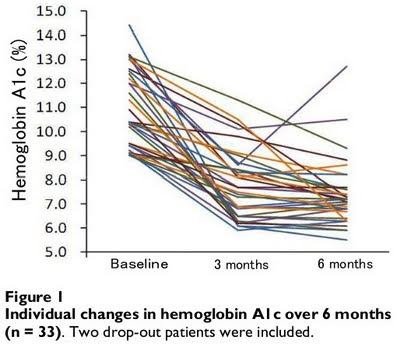Price published the first edition of his book in 1939. Fortunately, Nutrition and Physical Degeneration wasn't the last word on the matter. Anthropologists and archaeologists have been extending Price's findings throughout the 20th century. My favorite is Dr. Robert S. Corruccini, currently a professor of anthropology at Southern Illinois University. He published a landmark paper in 1984 titled "An Epidemiologic Transition in Dental Occlusion in World Populations" that will be our starting point for a discussion of how diet and lifestyle factors affect the development of the teeth, skull and jaw (Am J. Orthod. 86(5):419)*.
First, some background. The word occlusion refers to the manner in which the top and bottom sets of teeth come together, determined in part by the alignment between the upper jaw (maxilla) and lower jaw (mandible). There are three general categories:
- Class I occlusion: considered "ideal". The bottom incisors (front teeth) fit just behind the top incisors.
- Class II occlusion: "overbite." The bottom incisors are too far behind the top incisors. The mandible may appear small.
- Class III occlusion: "underbite." The bottom incisors are beyond the top incisors. The mandible protrudes.
Over the course of the next several posts, I'll give an overview of the extensive literature showing that hunter-gatherers past and present have excellent occlusion, subsistence agriculturalists generally have good occlusion, and the adoption of modern foodways directly causes the crooked teeth, narrow arches and/or crowded third molars (wisdom teeth) that affect the majority of people in industrialized nations. I believe this process also affects the development of the rest of the skull, including the face and sinuses.
In his 1984 paper, Dr. Corruccini reviewed data from a number of cultures whose occlusion has been studied in detail. Most of these cultures were observed by Dr. Corruccini personally. He compared two sets of cultures: those that adhere to a traditional style of life and those that have adopted industrial foodways. For several of the cultures he studied, he compared it to another that was genetically similar. For example, the older generation of Pima indians vs. the younger generation, and rural vs. urban Punjabis. He also included data from archaeological sites and nonhuman primates. Wild animals, including nonhuman primates, almost invariably show perfect occlusion.
The last graph in the paper is the most telling. He compiled all the occlusion data into a single number called the "treatment priority index" (TPI). This is a number that represents the overall need for orthodontic treatment. A TPI of 4 or greater indicates malocclusion (the cutoff point is subjective and depends somewhat on aesthetic considerations). Here's the graph:
 Every single urban/industrial culture has an average TPI of greater than 4, while all the non-industrial or less industrial cultures have an average TPI below 4. This means that in industrial cultures, the average person requires orthodontic treatment to achieve good occlusion, whereas most people in more traditionally-living cultures naturally have good occlusion.
Every single urban/industrial culture has an average TPI of greater than 4, while all the non-industrial or less industrial cultures have an average TPI below 4. This means that in industrial cultures, the average person requires orthodontic treatment to achieve good occlusion, whereas most people in more traditionally-living cultures naturally have good occlusion.The best occlusion was in the New Britain sample, a precontact Melanesian hunter-gatherer group studied from archaeological remains. The next best occlusion was in the Libben and Dickson groups, who were early Native American agriculturalists. The Pima represent the older generation of Native Americans that was raised on a somewhat traditional agricultural diet, vs. the younger generation raised on processed reservation foods. The Chinese samples are immigrants and their descendants in Liverpool. The Punjabis represent urban vs. rural youths in Northern India. The Kentucky samples represent a traditionally-living Appalachian community, older generation vs. processed food-eating offspring. The "early black" and "black youths" samples represent older and younger generations of African-Americans in the Cleveland and St. Louis area. The "white parents/youths" sample represents different generations of American Caucasians.
The point is clear: there's something about industrialization that causes malocclusion. It's not genetic; it's a result of changes in diet and/or lifestyle. A "disease of civilization". I use that phrase loosely, because malocclusion isn't really a disease, and some cultures that qualify as civilizations retain traditional foodways and relatively good teeth. Nevertheless, it's a time-honored phrase that encompasses the wide array of health problems that occur when humans stray too far from their ecological niche. I'm going to let Dr. Corruccini wrap this post up for me:
I assert that these results serve to modify two widespread generalizations: that imperfect occlusion is not necessarily abnormal, and that prevalence of malocclusion is genetically controlled so that preventive therapy in the strict sense is not possible. Cross-cultural data dispel the notion that considerable occlusal variation [malocclusion] is inevitable or normal. Rather, it is an aberrancy of modern urbanized populations. Furthermore, the transition from predominantly good to predominantly bad occlusion repeatedly occurs within one or two generations' time in these (and other) populations, weakening arguments that explain high malocclusion prevalence genetically.
* This paper is worth reading if you get the chance. It should have been a seminal paper in the field of preventive orthodontics, which could have largely replaced conventional orthodontics by now. Dr. Corruccini is the clearest thinker on this subject I've encountered so far.









